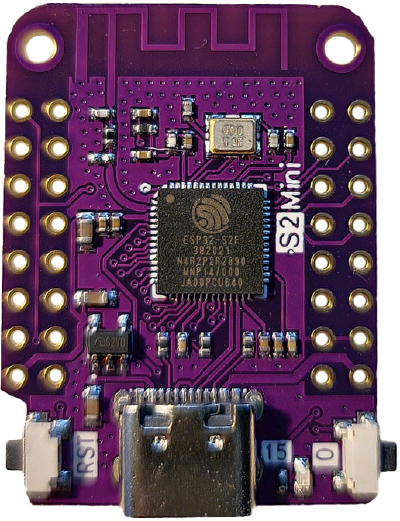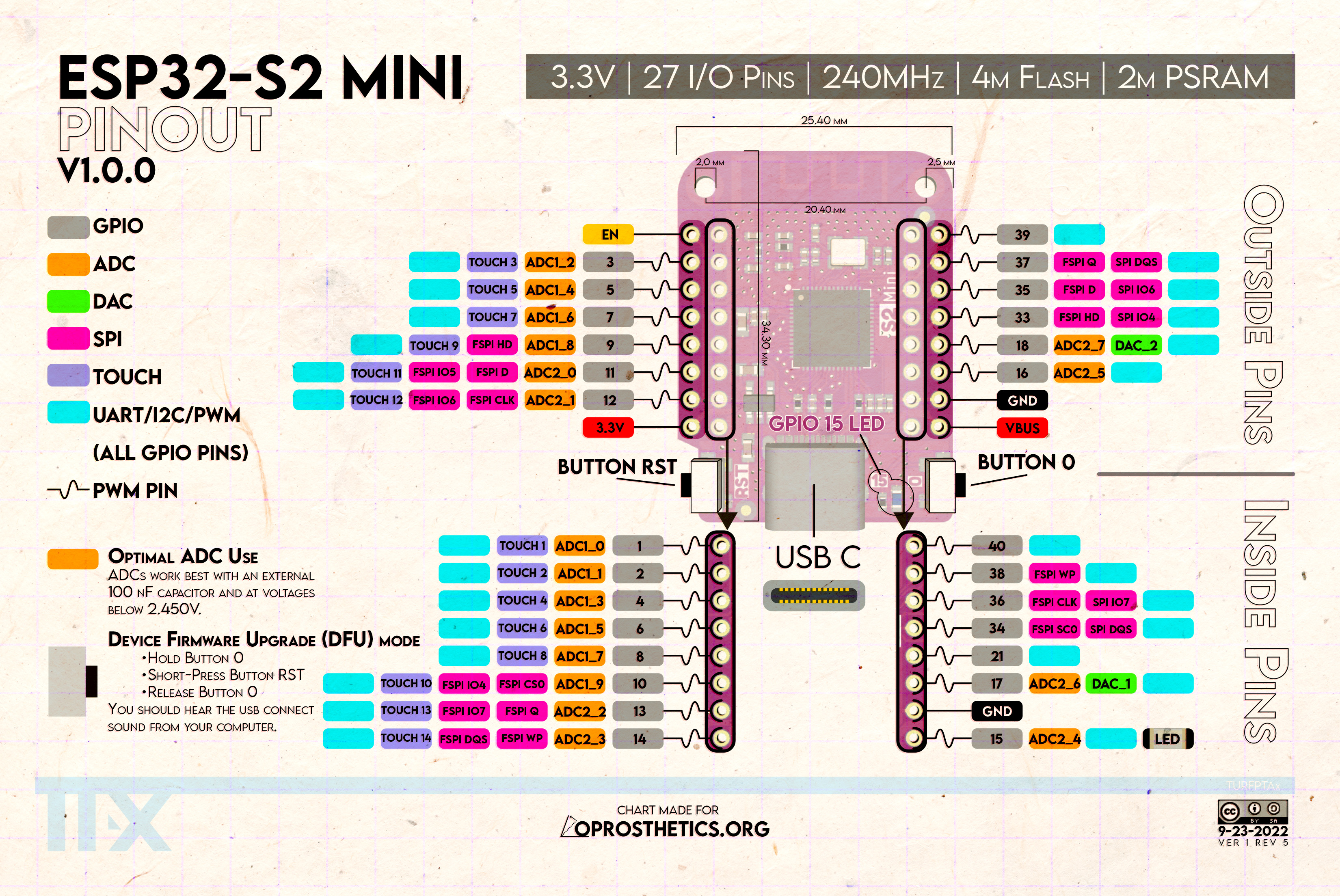It’s time to forget about Arduino Pro Mini and move on to something 32-bit. Wemos S2 Mini ESP32 Development Board with a price of 1.00 EUR looks promising.
And let’s see if MicroPython is usable for prototyping.

Specifikacija
- ESP32-S2FN4R2 (Datasheet) WiFi SoC, Xtensa® single-core 32-bit LX7 microprocessor, up to 240 MHz
- Integrated 802.11 b/g/n WiFi 2.4 GHz Transceiver, up to 150 Mbps
- Integrated RISC-V ULP Coprocessor
- Integrated Temperature Sensor (-20 °C to 110 °C)
- Operating Voltage: 3.0 to 3.6 V
- WiFi: 310 mA (peak)
- Modem-sleep: 12-19 mA
- Light-Sleep: 450 µA
- Deep-Sleep: 20-190 µA
- 320 KB SRAM
- 4 MB Flash (embedded)
- 2 MB PSRAM (embedded)
- 16 KB SRAM in RTC (accessable by main CPU, 8 KB accessable by ULP coprocessor)
- 4 Kbit eFuse (1792 bits reserved for user data)
- 2 13-bit SAR ADCs, up to 20 channels (2 channels not available on ADC2 due to USB D+/D-) work best for voltages below 2.45V
- 2x 8-bit DAC (second DAC FIX)
- 14x touch sensing IOs
- 4x SPI (2 usable due to embedded flash & PSRAM)
- 1x I2S
- 2x I2C
- 2x UART
- 1x DVP 8/16 camera interface, implemented using the hardware resources of I2S
- 1x LCD interface (8-bit serial RGB/8080/6800), implemented using the hardware resources of SPI2
- 1x LCD interface (8/16/24-bit parallel), implemented using the hardware resources of I2S
- 1x TWAI® controller compatible with ISO 11898-1 (CAN Specification 2.0)
- 8x PWM controller
- USB OTG 1.1 controller and PHY, with host and device support
- Cryptographic Hardware Accelerators: AES, ECB/CBC/OFB/CFB/CTR, GCM, SHA, RSA, ECC (Digital Signature)
- USB-C connector, for built-in ROM USB bootloader, serial port debugging, and USB device mode
- 3.3 V regulator ME6211C33
- Input Voltage 4.7V - 6.5V (Datasheet)
- Maximum Output Current: 500 mA (VIN=4.3 V, VOUT=3.3 V)
- Dropout Voltage: 100 mV@ IOUT=100 mA
- Operating Voltage Range: 2V~6.0V
- Low Power Consumption: 40 µA (typ.)
- Standby Current: 0.1 µA (typ.)
- 27 GPIO pins, plus EN, VBUS, 3V3, GND, GND
- 16 pins (outer) compatible with WEMOS/LOLIN D1 mini shields
- EN RESET button
- GPIO0 BOOT button
- GPIO15 LED (blue status LED)
- Compatible with CircuitPython, MicroPython (default firmware), Arduino and ESP-IDF
Korisni linkovi
Device firmware upgrade (DFU) mode
- Hold button 0.
- Short-press button RST.
- Release button 0.
You should hear the USB connect sound from the computer
Instalacija Micropython-a
Program your board using the esptool
# for the first time then you should erase the entire flash
esptool.py --chip esp32s2 --port /dev/ttyS0 erase_flash
esptool.py --chip esp32s2 --port /dev/ttyS0 write_flash -z 0x1000 board-20210902-v1.17.bin
for Windows replace /dev/ttyS0 with eg. COM9
Pinout

